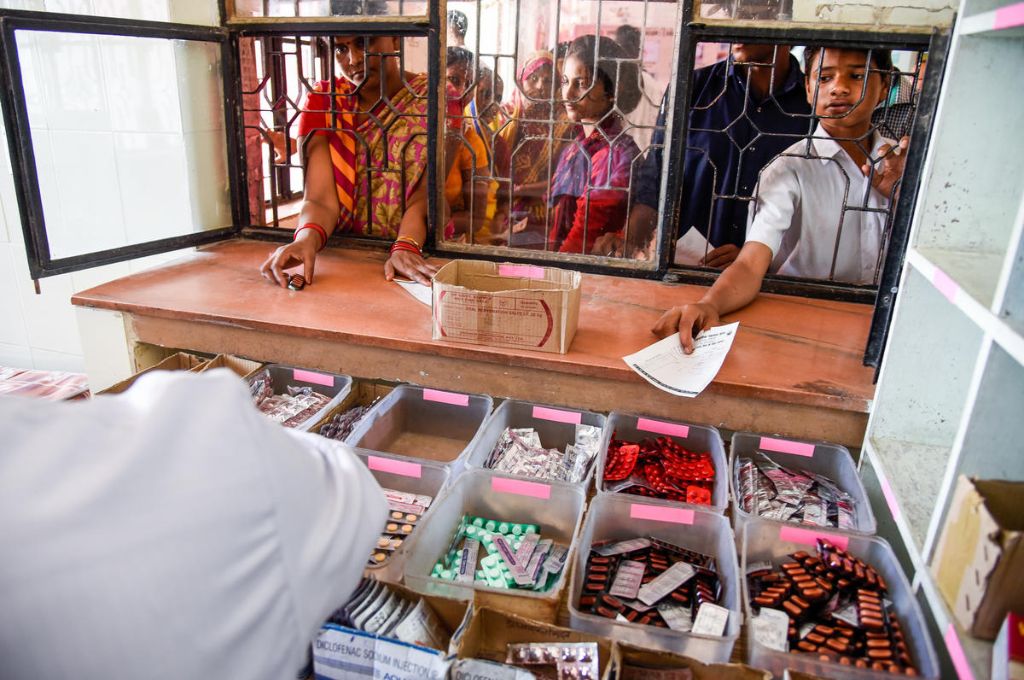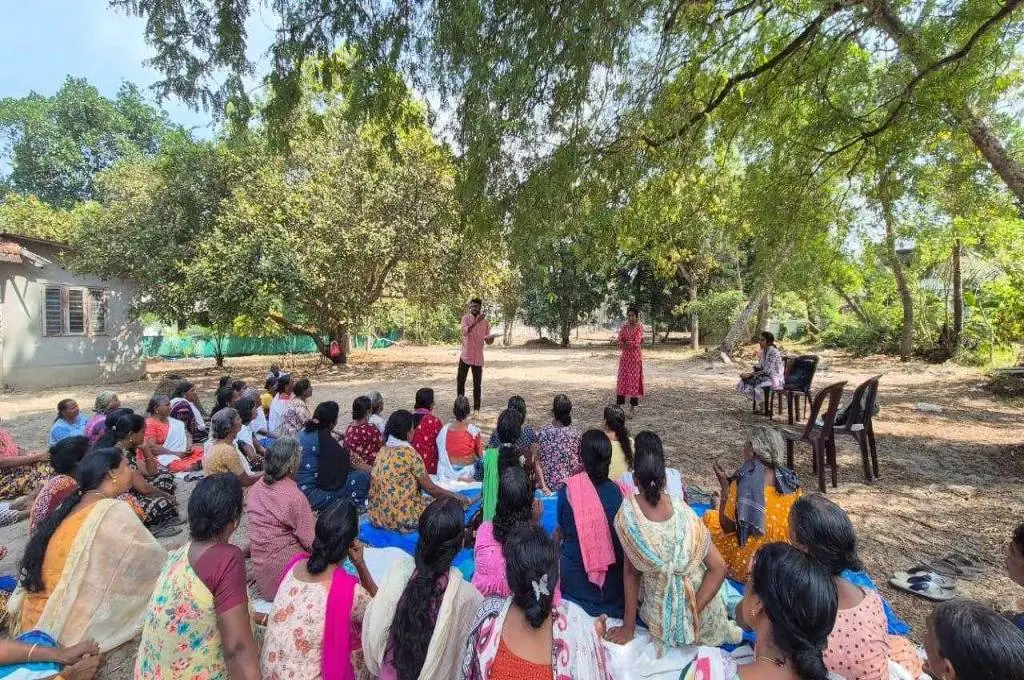The need for an enhanced role of the state in the health sector has never been felt as deeply as during the last two years of the pandemic. Amid rising COVID-19 cases, inadequate infrastructure in public hospitals, and little regulation from the government, private hospitals charged exorbitant fees. Given the scale of this problem, it was anticipated that the government would take cognizance of the lack of infrastructure in public healthcare, and measures to correct the same would be reflected in this year’s budget. The budget, however, reflects different priorities.
Reduced role of the state in health services
The fund allocation to the health sector this year was INR 83,000 crore, which is just 0.33 percent of India’s GDP. The National Health Policy 2017, on the other hand, envisages that the government should be spending at least 2.5 percent of the GDP on health to achieve its intended objective of universal health coverage. The inadequate allocation of funds has further resulted in underfunding of several flagship health schemes.
The budget for the National Health Mission—a programme directed towards strengthening the public health system including infrastructure, human resource, drugs, and equipment—witnessed an increase of just 1.8 percent from the budget estimates of the last financial year. This is when the government’s own data showed that a rural sub-centre serves 5,729 people, primary health centres (PHCs) serve 35,730 people, and community health centres (CHCs) serve 1,71,779 people in general areas as against the national target of 5,000 people for sub-centres, 30,000 people for PHCs, and 1,20,000 for CHCs respectively. A similar shortfall is documented in terms of personnel and equipment in the public health sector where a deficit of 6.8 percent of allopathic doctors at PHCs and 76.1 percent of specialists at CHCs has been reported.

Another scheme that was announced in FY 2021–22 and hailed as a health capacity generation programme was also overlooked—the Pradhan Mantri Health Infrastructure Mission. This scheme was allocated a budget of INR 64,180 crore for a period of five years, with a specific target outlay for each year. The total spending on this programme was INR 900 crore (RE or revised estimates) in FY 2021-22 and INR 5,156 crore (BE or budget estimates) in FY 2022–23. While the absolute numbers may have gone up in the span of two years, the total spending on this scheme is not even half of the target that was set for each of these two years.

Schemes with a focus on the creation and strengthening of infrastructure in the public health space have been largely underfunded. This suggests that the state is not working towards creating a greater role for itself in the delivery of health services.
A shift from physical to digital infrastructure
The highlight of this year’s budget was the emphasis on creating a digital ecosystem in health. Although the finance minister started her speech by recognising the need to strengthen health infrastructure, the focus was on building digital and not physical infrastructure. The National Digital Health Mission (NDHM) was allocated INR 200 crore, a more than six-fold increase from the previous year’s BE. The NDHM proposes a technology-driven solution to enhance the efficiency of the health system. It rests on two key building blocks:
- Generating unique health IDs for all citizens
- Maintaining a digital registry of all healthcare providers
While unique health IDs will be linked to patients’ medical records, the digital health register will act as an online repository of basic information about the workforce and different facilities involved in the delivery of health services. Unique health IDs have been introduced to maintain an efficient digital health record of a patient’s medical history and are mandatory for anyone availing the benefits of a government health scheme. However, experiences from past schemes suggest that when such ID cards are made compulsory, they often act as an additional barrier for the patients. Taking the example of the Pradhan Mantri Jan Arogya Yojana, a Hindi daily reported in 2019 that the health department in Uttar Pradesh was receiving eight to 10 complaints on a daily basis about hospitals denying treatment to patients even after they had produced an Ayushman Bharat ID card. Such instances were not restricted to Uttar Pradesh alone; the states of Madhya Pradesh, Rajasthan, and Delhi too witnessed such cases. Even in the case of Aadhaar, which has a well-established exception-handling mechanism in place, COVID-19 treatment was denied to patients on account of failure to produce the card or problems with its online verification. With scant regulation from the government and lack of proper infrastructure, cards linked to a patient’s identification proof, when made mandatory, can inhibit rather than enable them to seek medical care.
In 2019, cybercriminals stole 68 lakh records from a healthcare website based in India that carried patient information.
The NDHM requires healthcare providers to act as data fiduciaries wherein they are entrusted with maintaining a digital copy of both inpatient and outpatient medical records and then linking these with patients’ health IDs. This data, which includes both personal (relating to a specific individual) as well as non-personal (aggregate and anonymised) health records, is highly sensitive and of great market value. In 2019, cybercriminals stole 68 lakh records from a healthcare website based in India that carried patient information as well as personally identifiable information and doctor information. Such data is likely to end up with insurance companies, among other places, and could consequently drive up insurance premiums. This data is also an attractive target for big pharmaceutical firms competing to increase their profits. In a scenario where digital health records are prone to cyber theft and where there are no proper penalties in place in case of breach of data, these health records remain highly vulnerable.

The NDHM also has a provision of sharing the data collected by fiduciaries with health information users (HIUs)—agencies that would be able to view these health records with the consent of patients. However, the scheme fails to pin down precisely which agencies qualify as HIUs. It mentions that they can be doctors, applications providing advice to patients, government and its agencies involved in medical research, healthcare providers, or any other entity interested in viewing the records. This broad definition of HIUs can result in sharing of sensitive health data across different kinds of entities and result in further compromising of data.
The other building blocks of NDHM include DigiDoctor, e-Pharmacy and telemedicine, all of which require strong technical expertise to build and sustain their digital ecosystem. A report published in 2016 has highlighted that with the exception of some major public hospitals, most government hospitals and dispensaries have very little information and communications technology infrastructure. With the private sector better placed in terms of digital infrastructure, it is bound to take centre stage. But the private sector emerging as the main entity in health delivery presents another set of problems, significantly that of high out-of-pocket expenditure for patients. The literature on PMJAY, the public health insurance scheme, reveals that private hospitals indulge in malpractices such as ‘double billing’ whereby they claim the fee for a service from the insurance company in addition to charging the patients or asking them to buy drugs or diagnostics from outside. During the pandemic, a team from Down to Earth visited nine states that reported high rates of hospitalisation and recounted several tales of how government insurance schemes had failed to provide a financial cushion to patients.
Schemes such as NDHM can reinforce the dominance of the private sector in the health delivery space and further diminish the role of the state. The announcement of a national mission to digitise health records when the human, financial, and physical resources in the public health sector are all stretched thin raises several questions—the most pertinent of which is whether the healthcare sector in India is at an appropriate stage for the government to shift its focus to digital healthcare solutions.
—
Know more
- Listen to this podcast to learn about how the public and private sectors can fix the gaps in India’s healthcare system.
- Read about what India’s public healthcare system must focus on before prioritising digitisation.
- Understand how India’s health crisis is pushing people into poverty.




